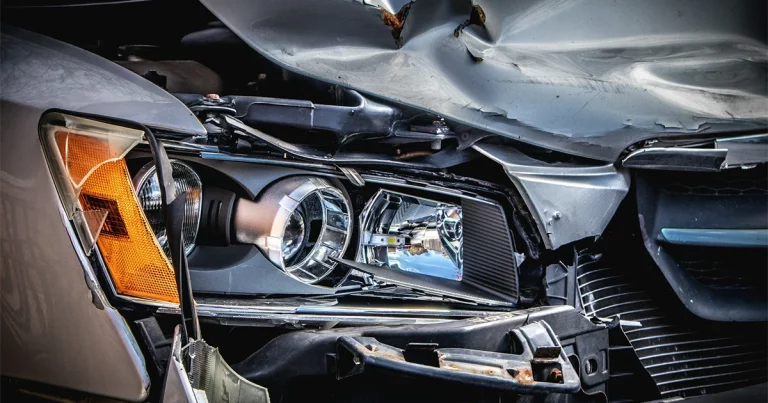Discover how to respond to a birth injury in California. Find trusted guidance on medical evidence, deadlines, and legal action for families.
What Is a Birth Injury (Birth Trauma)?
A birth injury (also called birth trauma or neonatal birth injury) refers to physical or neurological harm to a baby occurring before, during, or immediately after birth, typically as a result of mechanical forces, oxygen deprivation, hemorrhage, or mismanaged obstetric care. These injuries may manifest immediately or emerge over time.

- Brachial plexus / nerve injuries (e.g. Erb’s palsy)
- Bone fractures (clavicle, humerus, ribs)
- Intracranial hemorrhages / brain bleeds (subdural, intraventricular, subarachnoid)
- Hypoxic-ischemic encephalopathy (HIE) leading to brain injury or cerebral palsy
- Skull fractures, scalp lacerations/hematomas
- Facial or cranial nerve palsy
Spinal cord injuries
A birth injury differs from a congenital defect: the former is an insult or mishap occurring during the birthing process or immediately around it, while the latter is a structural or functional anomaly developed during fetal growth. In legal claims, the key question is whether a health care provider’s action or omission materially caused or worsened the injury.
What to Do After a Birth Injury in California?
If you live in California, your rights, deadlines, caps, and procedures are governed by state laws and court precedent. Understanding those details is vital:
| Birth Injury Type | Symptoms / Signs | Typical Causes During Birth | Possible Recovery / Treatment |
|---|---|---|---|
| Erb’s Palsy (Brachial Plexus Injury) | Weakness or paralysis of the arm, loss of shoulder movement, “waiter’s tip” position | Shoulder dystocia, excessive pulling on baby’s head/neck during delivery | Physical therapy, occupational therapy, sometimes surgery; many recover partially or fully over months |
| Clavicle Fracture (Collarbone Fracture) | Swelling, tenderness, limited arm movement | Shoulder dystocia, large baby, difficult vaginal delivery | Usually heals in a few weeks with immobilization; physical therapy if needed |
| Fractures of Humerus / Ribs | Pain, swelling, limited limb or breathing movement | Traumatic delivery, forceps or vacuum use | Immobilization, careful monitoring, physical therapy if required |
| Hypoxic-Ischemic Encephalopathy (HIE) | Seizures, poor feeding, lethargy, abnormal tone | Oxygen deprivation during labor, umbilical cord issues, placental problems | NICU care, therapeutic hypothermia, long-term developmental therapy; outcomes vary |
| Intracranial Hemorrhage (Brain Bleeding) | Seizures, abnormal consciousness, bulging fontanelle, vomiting | Traumatic birth, forceps/vacuum use, prematurity | NICU care, possible surgery, long-term neurodevelopmental follow-up |
| Facial Nerve Palsy | Drooping of one side of face, asymmetrical crying or feeding | Pressure on facial nerve during delivery, forceps use | Usually resolves within weeks to months; physiotherapy if needed |
| Spinal Cord Injury | Weakness, paralysis, loss of reflexes in limbs | Traumatic delivery, breech presentation, excessive traction | Surgery, physiotherapy, rehabilitation; outcomes vary depending on severity |
| Caput Succedaneum / Cephalohematoma | Swelling or bruising of scalp, soft or firm bump on head | Pressure from birth canal during vaginal delivery | Usually resolves spontaneously; observation, rarely intervention required |
| Brachial Plexus Avulsion (Severe Nerve Tear) | Complete arm paralysis, absent reflexes | Severe traction on shoulder/neck, birth trauma | Surgical repair if possible; long-term therapy; recovery often partial |
- Statute of Limitations — California Code of Civil Procedure § 340.5
- Medical malpractice claims (including birth injury) generally must be filed within three years from the date of injury, or within one year from when the injury is (or should reasonably have been) discovered — whichever is earlier.
- However, for minor plaintiffs (children) under age six, the statute allows filing until the child’s 8th birthday, whichever gives more time. That is, for a child under six, you can file up to the later of (a) three years from injury or (b) before the 8th birthday. ([Justia)
- A health care defendant may argue that you had constructive “discovery” earlier; the one-year limit begins when you are aware, or should reasonably have been aware, of both the injury and its negligent cause.
- In public hospital or governmental cases, additional shorter claim-notice periods (e.g. notice of claim) may apply.
- Damages Cap / Non-Economic Compensation Limits
California’s Medical Injury Compensation Reform Act (MICRA) sets a cap on non-economic damages (pain, suffering, emotional distress) in medical malpractice cases. Historically, that cap was $250,000.
However, recent legislative changes (Assembly Bill 35) beginning in 2023 have increased the cap for new cases filed on or after January 1, 2023. Under AB 35, the noneconomic damage caps increase gradually by $40,000 per year (for personal injury) and $50,000 per year (for wrongful death) until 2034, when the cap reaches $750,000 (or $1,000,000 for wrongful death), then will grow by 2% annually for inflation.
Note: for cases filed before 2023, the old $250,000 non-economic cap still applies.
Importantly, economic damages (medical costs, lost earnings, rehabilitation) are not capped under MICRA. - Pre-Suit Notice / 90-Day Notice Under CCP § 364
In California medical malpractice claims, plaintiffs must serve a notice of intent to file suit under Code of Civil Procedure § 364. If that notice is given within the 90 days before the statute of limitations would run, then the limitations period is extended 90 days from the date of notice.
Because medical malpractice law in California is complex, missing a deadline or failing to deliver proper notice can lead to dismissal, regardless of how strong your case is.
Evidence Collection & Preservation in California Birth Injury Cases
If you believe your baby has sustained a birth injury, prompt and meticulous evidence preservation is critical. Here’s a California-oriented blueprint.
Step 1: Retain a Specialized California Birth Injury Attorney Immediately
A lawyer experienced in California medical malpractice / birth injury will:
- Send formal preservation / litigation hold letters to hospital, providers, insurance carriers
- Submit a notice of intent per CCP § 364 if deadlines loom
- Advise on required steps and coordinate expert review
- Help you avoid procedural missteps under California law
Step 2: Request Complete Medical Records
From all involved parties, request:
- Maternal prenatal care records, labs, ultrasounds
- Labor and delivery records, fetal monitoring strips, operative and anesthesia notes
- Nurse and doctor notes, flow sheets, shift handovers
- Newborn / NICU / neonatal records, imaging, labs
- Any internal incident reports, quality assurance records
- Maintenance/calibration logs of monitoring equipment
- Any CCTV or room video footage, if available
Use formal requests (often via your lawyer) and demand both printed and digital/native copies.

Step 3: Preserve Digital / Monitoring Data
- Demand the native digital files of fetal monitoring, machine logs, timestamps
- Secure archived tapes, backups, server logs — these are often overwritten
- Ensure any digital data is copied in forensic format (with metadata, checksums)
Many hospitals purge or recycle fetal strip storage; early action is essential.
Step 4: Interview & Document Witnesses
Speak (with legal guidance) to:
- Labor/delivery nurses, monitoring techs
- Obstetricians, anesthesiologists, midwives
- Residents, interns, assistants
- NICU staff, technicians
- Anyone who handled monitoring equipment or noted anomalies
Get written or recorded statements with time, role, observations, and recollections of delays or unusual events.
Step 5: Expert Review & Causation Analysis
Your attorney should engage:
- Obstetric / maternal-fetal medicine experts
- Neonatal neurologists / pediatric neurologists
- Radiologists/neuroradiologists
- Biomedical engineers (for equipment or device issues)
These experts will review all data, reconstruct timelines, evaluate standard of care deviations, and offer causation opinions and damage forecasts.
Step 6: Build Detailed Timeline & Evidence Matrix
Create:
- A minute-level (or as fine as possible) chronology of events — fetal monitoring changes, interventions, delays, anomalies
- An evidence matrix mapping records, witness statements, logs to each time point
- Causation path overlays linking deviations to physiological stress and resulting injury
- Visual tools (charts, graphs, overlay plots) to help experts and jury understand the sequence
Step 7: Take Photographs / Videos of the Child
Document the child’s physical signs (e.g. limb weakness, asymmetry, contractures) with:
- High-resolution photos/videos with timestamp metadata
- Multiple angles
- Functional movement videos
- Serial documentation over time, before therapy interventions
These visual records often powerfully supplement expert testimony.
Step 8: Preserve Communications & Insurance Records
Save all:
- Emails, letters, responses to your inquiries
- Demand letters, settlement exchanges
- Insurance correspondence
- Internal memos, hospital responses
Such communications may show delay, concealment, admissions, or negotiating positions.
Step 9: Chain of Custody & Backups
- Maintain original records plus multiple backups
- Track who handled evidence, when, how copied or transferred
- Preserve metadata, file signatures, checksums
- Use secure, redundant storage (cloud, encrypted, off-site)
Maintaining integrity is critical in litigation.
Legal Claim & Litigation Strategy in California
Once you and your legal team believe the evidence is sufficient, the next step is pursuing a legal claim in California.
Step 1: Case Evaluation & Feasibility
Your attorney will assess:
- Strength and weaknesses of evidence
- Identity of potential defendants (obstetrician, hospital, midwife, equipment vendor)
- Insurance coverage limits and viability
- Potential damages vs cost of litigation
- Likelihood of success, risk versus reward
If the case does not seem viable, your lawyer may decline formal litigation.
Step 2: Pre-Suit Demand / Notice
Typically, the attorney issues a demand package containing:
- A narrative timeline of events
- Copies of key records, monitoring strips, imaging
- Expert opinion summaries
- Damage estimates (past/future medical, rehab, care, adaptation)
- A deadline to respond before litigation
Hospitals or insurers may settle or reject. If no resolution, move to formal complaint.
Step 3: Filing the Complaint & Pleadings
In the California Superior Court (county where injury or hospital is located), the attorney files:
- The complaint naming defendants and their roles
- Allegations of negligence, breach of standard of care, causation, damages
- Supporting exhibits (selected records, expert summaries)
- Compliance with notice requirements (if public hospital)
Step 4: Discovery, Depositions & Expert Reports
After filing:
- Parties exchange interrogatories, document demands, depositions
- Experts render opening reports and may be deposed
- Rebuttal reports, further discovery, motion responses follow
- Hospitals may push motions to exclude expert testimony or to dismiss
Discovery is where many cases succeed or fail — if vital monitoring logs, hospital records, or expert opinions are destroyed or excluded, your claim may collapse.
Step 5: Pretrial Motions & Mediation
- Defense may file motions for summary judgment, challenge expert admissibility (Daubert / Frye style challenges)
- Courts may require mediation or alternative dispute resolution
- Pretrial conferences to narrow issues and plan trial
Strong legal briefing and expert defenses are crucial in these motions.
Step 6: Settlement vs Trial
Most birth injury claims settle. Factors favoring settlement include:
- Risk of adverse verdict
- High litigation cost and uncertainty
- Desire for confidentiality
- Long timeline to trial
If the settlement doesn’t resolve it, the trial proceeds, where evidence, expert testimony, timeline narrative, and legal argument must persuade the judge or jury.
Step 7: Verdict, Judgment & Post-Trial Steps
- If verdict in your favor, ensure proper structuring (lump sum, periodic payments, trusts)
- Confirm future care funding (medical expense subaccounts, special needs trusts)
- Address liens (insurance, public benefits, medical payers)
- Opponent may appeal—prepare for post-trial briefing
Because birth injury claims often involve lifelong needs, your lawyer should ensure recovery is structured to last the child’s lifetime.
Practical Checklist for California Parents
Here’s a focused “to-do” list for parents in California:
- Seek neurologic/neonatal evaluation immediately if you observe any red flags in your baby
- Hire a California birth injury / medical malpractice attorney ASAP
- Through your attorney, send preservation / hold letters to hospital(s) and providers
- Request full medical records (prenatal, delivery, neonatal) — both print and native digital copies
- Demand native fetal monitoring files, device logs, and backups before they’re purged
- Interview nursing/medical staff who were present, get statements
- Take high-quality photos/videos of the child showing symptoms, movement deficits
- Maintain all communications, insurance correspondence, and hospital replies
- Build — with your attorney — a minute-by-minute timeline and evidence map
- Monitor deadlines (statute of limitations, notice periods, 364 notice)
- Plan financial resources (expert fees, lemma costs, long litigation)
- Ensure the child continues medical, therapy, and developmental follow-up, and keep those records

Summary & Final Advice
- Birth injuries are rare but serious; proving causation requires both medical evidence and connection to obstetric care.
- In California, strict deadlines apply (CCP § 340.5) and non-economic damage caps under MICRA must be navigated carefully.
- The quality and preservation of evidence — fetal monitoring data, hospital logs, device metadata — often make or break a case.
- You need a multidisciplinary team: a competent California birth injury attorney, medical / neurology / obstetrics experts, and possibly engineers to examine device logs.
- Act fast: preservation is time-sensitive, and procedural missteps or missed deadlines can be fatal to your case.
- While pursuing a claim, ensure your child receives the best medical and developmental care available, as those interventions are as important as legal strategy.






